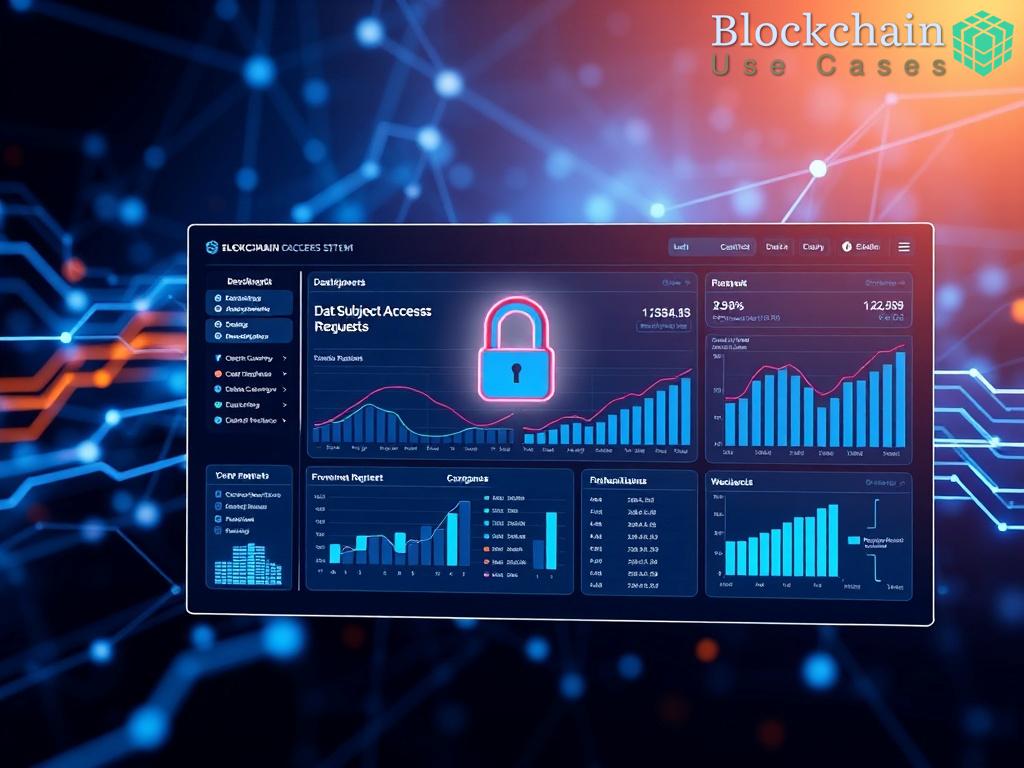Blockchain Fundamentals in Collateral Management
The Evolution of Collateral Management
In the rapidly changing landscape of finance, collateral management stands as a crucial pillar that supports lending and risk mitigation. The traditional methods of collateral management, often plagued by inefficiencies and security concerns, are now being redefined by the advent of blockchain technology. Blockchain introduces a decentralized and immutable ledger, enhancing transparency and security in collateral transactions, which is vital for both lenders and borrowers.
Understanding Blockchain’s Role in Enhancing Security
Blockchain technology operates on a distributed network where every transaction is recorded in a secure and tamper-proof manner. This feature is particularly beneficial in collateral management, where the integrity of collateral information is paramount. By using smart contracts, parties involved can automate the execution of agreements contingent on specific conditions, significantly reducing the risk of fraud and default.
- Transparency: All stakeholders have access to the same information, reducing disputes.
- Immutability: Once recorded, data cannot be altered, ensuring trust in the collateral’s legitimacy.
- Efficiency: Automated processes reduce the time and costs associated with manual interventions.
Comparing Traditional Methods and Blockchain Solutions
To fully appreciate the transformative impact of blockchain on collateral management, it is essential to contrast traditional methods with blockchain solutions. The table below highlights key differences between these two approaches:
| Aspect | Traditional Methods | Blockchain Solutions |
|---|---|---|
| Data Integrity | Susceptible to tampering and errors | Immutable and secure |
| Transparency | Limited access to information | Shared and visible to all parties |
| Transaction Speed | Time-consuming due to manual processes | Instantaneous with smart contracts |
| Cost | Higher due to administrative overhead | Reduced costs through automation |
Enhanced Transparency and Traceability
In the world of lending, transparency and traceability are not just desirable attributes; they are essential components that underpin trust and efficacy in financial transactions. The incorporation of blockchain technology into collateral management systems has revolutionized how information is shared and verified among stakeholders. This innovation brings about a paradigm shift that ensures all parties can access real-time data, leading to more informed decisions and reduced risks.
The Power of Transparent Transactions
One of the primary advantages of blockchain is its ability to provide an open ledger where all transactions are recorded and visible to authorized users. This transparency ensures that every stakeholder, from lenders to borrowers, has equal access to the same information regarding collateral assets. Such visibility minimizes the potential for disputes and misunderstandings, fostering a collaborative environment that is vital for successful lending.
Traceability: A New Era for Asset Management
Blockchain not only enhances transparency but also significantly improves the traceability of collateral assets. Each transaction is permanently recorded in the blockchain, creating an unchangeable history of ownership and status. This feature is particularly advantageous in cases of complex collateral arrangements or when multiple parties are involved. Stakeholders can easily track the lineage of an asset, ensuring that all relevant data is readily available. This ability to trace assets back through their transaction history becomes a powerful tool for risk assessment and management.
Key Benefits of Enhanced Transparency and Traceability
The following points summarize the pivotal benefits that blockchain brings to collateral management:
- Improved Risk Assessment: Stakeholders can analyze historical data with ease, leading to better-informed risk evaluations.
- Faster Resolution of Disputes: Clear transaction histories reduce the time and costs associated with resolving conflicts.
- Increased Trust: The integrity of information boosts confidence among all parties involved in the lending process.
In conclusion, the enhanced transparency and traceability facilitated by blockchain technology represent a significant advancement in collateral management. As financial institutions continue to embrace these innovations, the landscape of lending will become increasingly secure, efficient, and trustworthy.
Risk Mitigation through Smart Contracts
In the realm of contemporary finance, the integration of blockchain technology has heralded a new era in collateral management. One of the most notable innovations is the implementation of smart contracts, which empower stakeholders to navigate the complexities of lending with enhanced security and reliability. These self-executing contracts, governed by code, facilitate transactions in a manner that mitigates risks traditionally associated with financial agreements.
Smart Contracts: The Pillars of Automated Security
At the core of smart contracts is their ability to automate the execution of agreements based on predefined conditions. This feature significantly minimizes human intervention, thereby reducing the potential for errors and disputes. For instance, in a lending scenario, the terms of the loan can be encoded into the smart contract, ensuring that collateral is automatically released or forfeited based on the fulfillment of payment obligations. This level of automation not only increases efficiency but also enhances the security of the transaction, as all conditions are transparently documented and enforced without the need for intermediaries.
Real-Time Monitoring and Compliance
The effectiveness of smart contracts extends beyond automation; they also facilitate real-time monitoring of compliance. In traditional lending environments, verifying borrower adherence to contract terms can be both time-consuming and labor-intensive. However, with blockchain technology, smart contracts can continuously track performance metrics and collateral status. Any deviation from the agreed terms can trigger pre-defined actions, such as alerts or automatic penalties, thus providing an immediate response to potential risks. This proactive approach to compliance not only safeguards lenders but also fosters a sense of accountability among borrowers.
Enhancing Trust Through Immutable Records
Another significant advantage of utilizing smart contracts in collateral management is the creation of immutable records. Once a smart contract is deployed on the blockchain, its terms and execution history become part of an unalterable ledger. This transparency ensures that all parties have access to the same verified information, reinforcing trust in the lending process. In an environment where trust is paramount, the ability to rely on tamper-proof records acts as a vital deterrent against fraudulent activities. As stakeholders engage with a transparent, immutable system, the overall integrity of financial transactions is bolstered.
In summary, the incorporation of smart contracts into collateral management represents a transformative shift in risk mitigation strategies. By automating processes, enhancing compliance monitoring, and providing immutable records, blockchain technology equips lenders and borrowers with the tools necessary to navigate the complexities of financial transactions securely. As the financial landscape continues to evolve, embracing these innovations will be critical in fostering a more secure and efficient lending environment.
Improving Liquidity and Efficiency
As financial markets continue to evolve, the demand for high liquidity and operational efficiency in collateral management becomes increasingly critical. Traditional models often struggle with slow processes and lack of transparency, which can hinder the ability of institutions to adapt swiftly to changing conditions. However, the integration of blockchain technology presents an opportunity to overcome these challenges, redefining how liquidity is managed and facilitating smoother transactions. By leveraging the unique attributes of blockchain, financial institutions can achieve not only increased liquidity but also enhanced operational efficiency.
Streamlining Operations through Blockchain Innovation
At the heart of blockchain’s impact on collateral management lies its ability to streamline operations. By utilizing a decentralized ledger, all stakeholders—including lenders, borrowers, and custodians—gain immediate access to real-time information regarding collateral assets. This immediate access to data significantly accelerates decision-making processes, allowing institutions to respond more rapidly to market changes. Enhanced operational efficiency is achieved through the elimination of cumbersome paperwork and manual processes that have historically bogged down transactions.
Moreover, the use of smart contracts automates various operational tasks, reducing the need for human oversight. For instance, collateral can be managed more efficiently by automatically adjusting its valuation based on market conditions, which in turn optimizes liquidity management. This automation not only mitigates the risk of errors but also lowers operational costs associated with collateral management.
Enhancing Liquidity through Transparent Asset Management
The transparency that blockchain offers plays a pivotal role in improving liquidity within collateral management. By providing an open and immutable record of all transactions, stakeholders can easily track the flow and status of collateral assets. This level of visibility fosters confidence among market participants, which is essential for enhancing liquidity.
Furthermore, with a clear understanding of collateral availability and status, financial institutions can engage in more informed trading and lending decisions. This is particularly beneficial in dynamic market environments where rapid responses are necessary. The ability to swiftly assess collateral value and availability enables institutions to optimize their funding strategies, reducing reliance on costly liquidity sources and enhancing overall market efficiency.
| Aspect | Traditional Methods | Blockchain Solutions |
|---|---|---|
| Operational Speed | Slower due to manual processes | Instantaneous transactions through automation |
| Visibility of Assets | Limited access and visibility | Real-time tracking for all stakeholders |
| Cost Efficiency | Higher operational costs | Reduced costs through streamlined processes |
In conclusion, the integration of blockchain technology into collateral management presents a significant opportunity to enhance liquidity and operational efficiency. By streamlining operations and providing transparency, blockchain not only supports the security of lending practices but also empowers financial institutions to navigate complex market dynamics with greater agility. As the financial landscape continues to evolve, embracing blockchain innovations will be crucial for institutions seeking to maintain a competitive edge in collateral management.
Regulatory Compliance and Security Benefits
In the complex realm of financial transactions, regulatory compliance is paramount. Financial institutions are under constant pressure to adhere to evolving regulations that govern lending practices, particularly concerning collateral management. The integration of blockchain technology not only streamlines compliance processes but also enhances the security framework in which these transactions occur. By utilizing a decentralized ledger, organizations can ensure that all data related to collateral is accurate, accessible, and auditable. This capability significantly reduces the risk of non-compliance, which can lead to hefty fines and reputational damage.
The inherent design of blockchain promotes a shared and immutable record of transactions. Consequently, all stakeholders can monitor compliance in real-time, which is invaluable for regulatory reporting. This transparency fosters a culture of accountability, as every action taken regarding collateral is documented and easily retrievable. In a landscape where regulatory scrutiny is intensifying, the ability to provide clear evidence of compliance is a distinct advantage for financial institutions.
The landscape of lending has undergone a transformative shift with the introduction of blockchain technology, particularly in enhancing security measures. Traditional collateral management systems are often vulnerable to fraud and manipulation, which can compromise the integrity of lending practices. However, blockchain’s decentralized nature acts as a robust defense against such threats, providing a fortified security framework for all stakeholders involved.
One of the most compelling aspects of blockchain is its ability to create tamper-proof records of transactions. Each entry on the blockchain is cryptographically secured and linked to previous entries, forming a chronological chain of data that cannot be altered retroactively. This feature is vital for maintaining the authenticity of collateral information, as it ensures that any changes made are immediately visible to all parties. This enhanced visibility not only deters fraudulent activities but also builds trust among lenders and borrowers, who can rely on the integrity of the collateral being managed.
Moreover, the implementation of smart contracts further elevates security by automating the execution of transactions based on predefined conditions. This automation minimizes human error and eliminates the need for intermediaries, which can be potential points of failure in traditional systems. By ensuring that all terms are executed precisely as agreed, smart contracts provide an additional layer of security that safeguards the interests of all parties involved in the lending process.


















